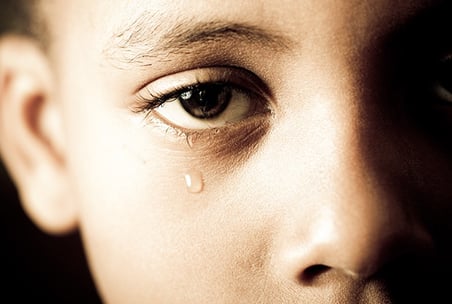Child Abuse and Neglect and What You Can Do to Reduce It
2 min read
Date Published: 09/27/2018
Last Updated: 11/22/2024
National Fatherhood Initiative Blog / Latest Articles
2 min read

The latest national data are out on child abuse and neglect.
Compiled by the Children’s Bureau at the U.S. Department of Health and Human Services from state reports, these data answer the following questions:
The good news is that in the past five years the rate of child abuse and neglect has declined. Unfortunately, the data that answer those questions should continue to concern us all. Here are some of the sobering lowlights:
Whenever I examine data on child abuse and neglect I do so with trepidation. I wonder: How can a parent abuse or neglect their child? While we can never excuse a parent for such behavior, we can better understand the risk factors that contribute to child abuse and neglect and do everything in our power to reduce or eliminate them.
That’s why the use of a fatherhood program that research has shown reduces the risk of child abuse and neglect can be a potent intervention in the fight to reduce child abuse and neglect. The evidence-based 24/7 Dad® program of National Fatherhood Initiative® (NFI) is one such intervention.
Research in Texas on 645 dads of different races and ethnicities found that the program builds all five of the protective factors—four at a high level of statistical significance—that a large body of research has found reduce the risk of child abuse and neglect. For a summary of this study and its other findings, read my three-part blog post on it: click here for Part 1, here for Part 2, and here for Part 3.
NFI has other resources that can enhance any intervention to reduce the risk of child abuse and neglect. These resources include:
I encourage you to download and read the factsheet on the latest data on child abuse and neglect. If you work in an organization with efforts focused on reducing child abuse and neglect, I also encourage you to obtain or add to your collection of NFI resources that can enhance those efforts.
Are you aware of the rate of child abuse and neglect in your state and community?
Is there something more your organization could do to reduce the risk of child abuse and neglect, particularly with dads?
Date Published: 09/27/2018
Last Updated: 11/22/2024
Download the ebook to learn how to create fatherhood initiatives that engage every sector of community life.

Train Your Staff
Fatherhood Programs
Fatherhood Data
© 2025 National Fatherhood Initiative®. All rights reserved.